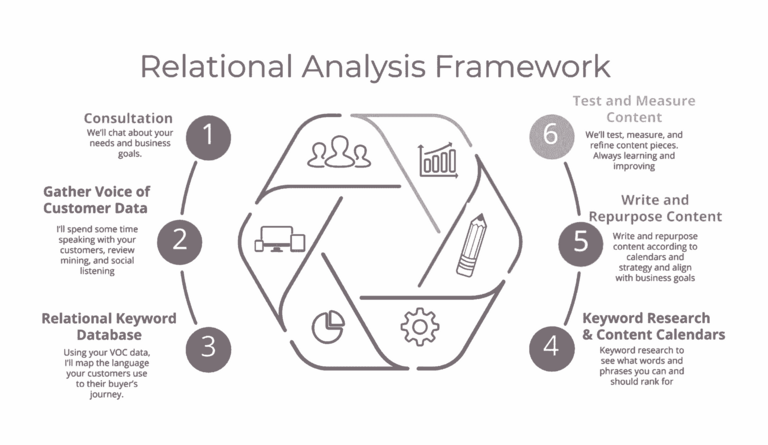Building strong client relationships isn’t rocket science.
In fact, cultivating strong relationships with clients boils down to just two things:
- Good communication;
- Offering lots — and I mean lots — of value with the aim of improving your client’s experience.
Of course, it’s easier said than done. That’s why we’ve put together this handy guide. In it, you’ll learn how to:
- Set clear expectations from the get go
- Position yourself as a strategic partner
- Build trust from the start
- Always meet your deadlines
- Impress your client with results
- Make the entire working process smooth
- Ask for repeat work
Ready to learn more about building successful business relationships and landing repeat work?
Let’s jump in.

1. Set Expectations from the Outset
Understanding your clients’ expectations from the very beginning puts you in a better position to fulfil their requirements than working based on guesswork.
Adrienne Barnes, SaaS Consultant and Content Marketer, who has worked with her longest client for over a year is of the same view. Barnes shares:
“One of the most important things that I do to create a better experience for my clients is to very clearly communicate my expectations and truly understand their expectations. I ask a lot of questions early on, and I make zero assumptions.”
Talk about building great relationships with your clients!
Here’s what you can do to dig into your client’s expectations and build strong relationships based on it:
Jump on a call with your client
Sometimes, email communications can help you learn your clients’ expectations.
However, most of the time, nothing beats the effectiveness of a good ol’ phone call for getting to know the other person, their business goals, challenges, and more.
And if a face-to-face client call is needed, Zoom is a great (and free) option.
Settle on a brief
This 2-3-page document bears all the important details of a project. It’s the foundation of any smooth sailing project.
The information included in a brief clarifies what both parties expect — bringing them on the same page — therefore, minimizing odds of unfulfilled expectations.
If your client doesn’t already have a brief or the brief doesn’t answer all your questions, share your brief template or send over the remaining questions before you get to work.
Ask lots of questions
As a rookie small business owner, it can be daunting to question new clients. I’ve been there myself. But, my concepts changed when I gathered that questioning reflects your interest in the job at hand. Asking the right questions also shows you know the ins and outs of your job well.
Explain your working process
This helps set expectations on each phase of the project. Your client learns what they’re investing in and how you’re going to be working.
How you work is a burning question that most clients have so they tend to inquire about it themselves.
If they don’t, take the initiative and share how you work, the steps involved, and how it has all played out with past clients.
Alternatively, you can outline your working process on your site like Barnes does:

2. Position Yourself As a Strategic Partner
Think about it for a second: would you like to work with someone whom you’ve a purely transactional business relationship with?
Or, would you work with someone who wants to help you succeed by offering the most value to you?
It’s the latter, isn’t it? New clients and old ones alike appreciate the extra value that you offer.
Here’s a simple example:
As a freelance writer, my job is to write research-backed content. However, in several cases, I go the extra step and share what I’ve written with my audience. By doing so, I help promote my clients’ content.

For B2B SaaS writer, Kat Ambrose, building positive client relationships is based on the same. She shares:
“The moment I realized that I needed to be more than just someone who could write blog posts for my clients was the moment I started seeing a difference in retaining them [clients].”
So how can you position yourself as a strategic business partner? Here are some helpful tips:
Research your client
Before you get back to your potential customers’ query, take a few minutes to research them. A quick Google search helps!
If you find the prospect is a good fit for your business, dig deeper. Go through their website thoroughly. Don’t forget to check their LinkedIn, Facebook, and other social media accounts to understand their goals.
All this research will prove handy in understanding what the client’s goals are and how you can go above and beyond to help reach them.
Give free advice
The idea is to increase the value you provide to improve your client’s experience with you.
For instance, Ambrose, shares that she:
“Offers[s] guidance based on my experience and knowledge of the industry, tell clients what they *actually need* instead of what they think they need, and be a sounding board for ideas especially in the early stages of a project. That initial collaboration sets the tone.”
Monfa C. ex-freelance designer did the same and ended up working with his client, Visme, a DIY infographic making software, full time.
Monfa explains:
“In my case, I always try to maintain the same level of professionalism, accessibility and emotion with all clients, but there are clients who excel at making you feel comfortable. With these clients you feel the need to offer more than what is asked of you.”
The folks over at Visme made Monfa feel comfortable and maintained good communication from their side as they worked on design projects together.
Consequently, Monfa adds:
“I looked for a way to give him [his client] confidence, fulfilling and improving my delivery times. Sharing ideas even when they were not requested of me and maintaining clear communication and organization in my work.”
3. Build Trust from Before the Prospect Knocks on Your Door
As in any other lasting relationship, a solid business relationship stands on trust.
When prospects know you as someone reliable and authoritative in the industry, they’re more open to the idea of striking a long-term relationship with you.
But you can’t build trust overnight.
Instead, it’s a slow process with your client increasingly trusting you as they move through each stage of their decision of working with you.
Put on your relationship managers’ hat and get to work by taking these steps:
Build yourself as an authority in your field
Start with building a relevant writing portfolio and a trusty website that’s easy to navigate, clearly explains what you do, shares your bio and answers questions that prospects may have in their mind.
Want some more ways to gain your visitors’ trust? Share client testimonials, businesses you’ve worked with in the past, results you’ve achieved for them, and case studies.

Next, go on to offer freebies (such as an eBook) or share valuable content on your website and/or social media to build authority.
Get back to your potential customers right away
Get back to the query at your earliest. You can also set an estimated response time on your website to set expectations.
Lastly, built trust by sharing how you’ve helped other clients whom you did similar projects for and the results you drove.
Gain your clients’ trust further as you work together
Keep your client looped throughout the process by sharing project updates weekly. This destresses your client as they don’t have to worry about how things are going.
4. Always Meet your Deadlines
By meeting deadlines, you tell your client you value their time, which improves their experience working with you.
Unfortunately, freelancers and other service-based business owners have developed a bad reputation when it comes to deadlines. On the bright side, this leaves you with a long hanging opportunity to impress your clients and further your business relationship.
In fact, B2B Freelance Writer for SaaS, Elise Dopson, shares delivering work before the deadline as her “best tip for improving a client’s experience.”
She explains:
“I usually set my own deadlines once a client comes to me with a brief — usually within 5-7 working days. However, I try to deliver the draft at least one day before the deadline I’ve said.
It doesn’t sound like much, but it surprises them and sets me apart.”
Some steps you can take to honor deadlines:
Use a project management software to lay out all your work
When you’ve a visual understanding of all your client work — what’s due, what’s in progress, and what’s delivered — you’ll be able to follow through with your schedule.
The following four project management tools can help you keep an eagle eye on your ongoing projects:
- Trello: Gives you ten free, kanban-style boards that you can use to manage your work. On my main Trello work board, I’ve the following four columns: To-do, In progress, Review/Edits required, Done.
- Notion: This one’s completely free for personal use. You can create kanban boards as well as task lists, and jot down project notes.
- Todoist: While I use Trello to track each project’s progress, I use Todoist as my daily to-do list app so I’ve a clear idea of what I’ve to work on each day.
- HubSpot CRM: Depending on the size of your team, a versatile CRM (customer relationship manager) tool like HubSpot’s free option could come in very handy.
Only take on work that you can deliver in time
Remember that retaining existing clients is far less expensive than getting new business. And, no. I’m not the only one saying so. 70% of businesses say it’s more cost effective to retain customers than acquire new ones.
So, prioritize completing pending projects within their due dates instead of working on landing more work than you can complete.
Give yourself fake deadlines
This one’s my favorite way to reach my deadlines. If a content piece is due on the 20th of the month, I’ll add 15th to my calendar. This way, even if I’m unable to finish all the work, I still have time to deliver the project on time.
5. Impress Clients with Results
Not only will delivering results you promised enhance client experience, but it also boosts the likelihood of them turning into repeat customers.
For example, as a freelance writer, I take the time to understand clients’ brand voice and formatting style closely, which means they get an end product that doesn’t require meaningless edits.
Here are some ways you can achieve results for your clients:
Set up results tracking metrics
This one’s a hat tip to Michael Kennan, another SaaS writer and content refreshing expert.
Kennan explains:
“You want to know exactly how many leads, conversions, sign-ups, or traffic your articles are getting month over month. Build a case for how you contribute to the company’s business objectives.
If your articles perform well, it’s an easy up sell to get more, higher-priced work than just sending articles into the void without any check-up.”
Keep the results you want to achieve on the front
This way, you’ve the results you want to achieve on the top of your mind.
But, instead of writing elaborate paragraphs of what you want to accomplish, summarize your goal in two lines and keep it front and center.
6. Make the Entire Work Process Smooth
Building relationships boils down to giving your client’s a smooth experience. All the tips I’ve shared so far have this idea at their heart.
When everything is effortless and straightforward for your clients, their experience working you is A1, making you their go-to person for more work.
So, in addition to sticking to the tips above, consider taking these steps too:
Make it easy for clients to work with you
This extends to both before potential customers reach you and once they’re working with you.
For the former, make it easy to contact you. How? By sharing your contact info clearly on your website.
And, make sure you make contacting you an easy decision. Share one email address instead of making them think which one to use in case of multiple addresses.
As for the latter, be communicative.
You already know that you should keep your client updated. Other than that, complete any edits requested with 1-2 business days, 3 at most.
If, in case, your schedule is packed and you can’t get back with the edits any sooner, specify the time you’ll take.
Have a clear process for onboarding clients
Have a checklist of questions you need to ask so you can ask them in one go. For instance, I ask some of these questions each time I work with a new client:
- “What exactly do you need my help with?” (This will help you better understand the client’s needs.)
- “Who will be my point of contact for the project?”
- “How in-depth is the brief (or do you need me to make one)?”
- “What turnaround time do you’ve in mind for this work?”
- “Are there any specific payment terms you have in place?”
- “How do you prefer making payments?”
Also, know the raw material that you’d require, so you can request for it all at once instead of getting your client to exchange tons of emails.
Communicate clearly
This means you need to write no-fluff emails that instantly get to the point. Remember: your clients are pressed for time, so make things mindless for them.
Have a question you forgot to ask? Get straight to it in your email.
Have a few things to ask or bring to attention? Use bullet points to share them in your email communications. This makes your email easy to read and, therefore, easy to respond for your client.
Lastly, if you find yourself writing a page-long email, consider creating an audio explainer or Loom video.
7. Ask for Repeat Work
If you’ve done everything right, there’s no shame in asking for repeat work.
I like to ask my clients how their experience was or if they liked the work to see how they felt. Often, I also go on to ask them if there’s something that I could have done better.
In several instances, clients will themselves ask you to work long-term with them.
Michelle Garrett, PR Consultant and Writer, says:
“Once they see that they can trust you and that you deliver quality work, they may ask you to take on additional tasks.”
So, how do you ask for repeat business?
Inquire about how the client’s working experience was and if you could help them more
Garrett suggests you ask:
“’Is there anything else I could be helping you with?” or suggest something. For example: ‘I’m writing blog posts for you now, but would it be helpful if I also wrote social media posts?’”
You can also try:
“I’m planning my work schedule for next month, should I save a spot for you?” or “It was a pleasure working with you. Would you be interested in working together further?”
Follow-up with clients after a few months
A good retention program doesn’t need to be complicated. Setting up a simple calendar reminder that tells you to check in with your client and ask if you could help them with more work will do the trick.
Start Building Strong Client Relationships Right away
There you have it! You’re now armed with tips to build good client relationships — one that can win you repeat work or even referrals.
Admittedly, in the beginning, putting all this work into relationship building can feel overwhelming.
But remember: lasting client relationships can take you from rags to riches. Simply, focus on giving your clients a smooth experience and you’re all set.
To recap: start building trust, take the time to understand and set client expectations, and make working with you a smooth sail.
Don’t forget to meet your deadlines.
And, most importantly, never be afraid of asking for repeat work.
So what are you waiting for? Go build new relationships. Here’s to your list of happy clients.
The post 7 Ways to Build Strong Client Relationships (+ 6 Pro Tips) appeared first on Smart Blogger.

No comments:
Post a Comment